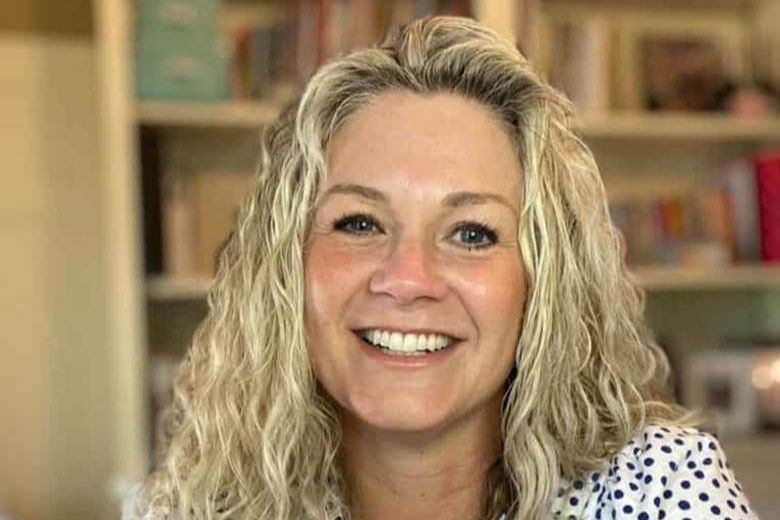Six Questions with Kaitlyn Wells
- Mary Boone

- Jun 14, 2022
- 3 min read

Kaitlyn Wells is an award-winning journalist whose work has been featured in The New York Times, The Wall Street Journal, and The Washington Post, among others. Her commentary on diverse literature can be found in The New York Times Book Review, BookPage, and Diverse Kids Books. Her debut picture book A Family Looks Like Love (Penguin Random House/Flamingo Books) was released this spring. She lives in New York City with her wonderful husband, rambunctious dog, and demanding cat. Visit KaitWells.com to subscribe to her newsletter that explores how Black, Indigenous, and womxn of color navigate the world. And follow her on Facebook, Instagram, TikTok, and Twitter.
1. What was your favorite book when you were a child? Why?
Honestly, I read so many books as a kid that I don't remember everything that I've read, but my parents tell me I really liked If You Give a Mouse a Cookie by Laura Numeroff and Alexander and the Terrible, Horrible, No Good, Very Bad Day by Judith Viorst. Two books that I do remember enjoying are The Last Unicorn by Peter S. Beagle and Good Dog, Carl by Alexandra Day. To this day, I love how beautifully Beagle crafted the fantasy adventure and the poignancy of love and loss. And the Carl books will forever be beloved in my mind for the titular Rottie's loyalty and love. .
2. Do you ever struggle to come up with your next project? Or do you have lots of ideas and find it a challenge to narrow down your ideas?
As a journalist, I'm used to brainstorming story ideas every day. Now as a picture book author with the freedom to turn just about any idea into a fun story, I have so many ideas pinging around in my brain that it's challenging to make time for them all. I find inspiration in just about everything—from spotting a lonely butterfly on the sidewalk to reading an interesting fact in a breaking news story. All of these ideas are scribbled down in notebooks, both traditional and digital. I tend to narrow down what I want to work on next if the idea really excites me and I have a kernel of a story arc that I think is worth pursuing.
3. What kind of student were you? What were your favorite subjects?
I very much achieved perfect or near-perfect grades, kept my head down, remained helpful to my teacher and classmates, and got stomach aches whenever I did poorly on an assignment. Back then, we called it a Type A student, but today you'd probably classify it as a mix of perfectionism, anxiety, and internalized imposter syndrome within a white supremacist system.
My favorite subjects growing up were Journalism, Dance and Art, and later a version of economics that allowed students to take on an apprenticeship or internship in their chosen field. As I got older I really appreciated my college elective coursework, which included guitar, kickboxing, and independent study. Oh, and I was obsessed with my Greek Mythology course!

4. Was this always the title for this project? If not, what other titles did you consider and how did you land on this one?
The original manuscript title for A Family Looks Like Love was called Sutton Button the Mixed Pup. The premise of the story is based on my own dog, who's also named Sutton, so it seemed fitting at the time. But in the end, my editor and I settled on the final title because the story was more about its emotional pull, rather than the main character.
5. If you could tell readers one secret about this book, what would it be?
I don't think I'd call it a secret but an interesting fact is I originally wrote one of the characters as a sneaky squirrel because, let's face it, squirrels can cause a lot of problems. J/K. Early in the revision process I swapped the character out for something new. Let me know if you figure out that swap when you read the book!
6. If you read A Family Looks Like Love to a room filled with kids, what message would you want them to leave with?
Speaking from experience, it's disheartening when someone says your family isn't your own because you don't come as a matching set. So, I want my audience to feel seen and empowered when they read this book. The world is full of "nontraditional" families and the relationships kids forge within their own families are important. Every child matters, and every child looks exactly perfect—as does their family. I also hope young readers find joy in the book after following Sutton on her adventures.




Can't wait to read your new book, Kaitlyn! I strongly identify with this part of your interview: "a mix of perfectionism, anxiety, and internalized imposter syndrome." Yup! #nailedit